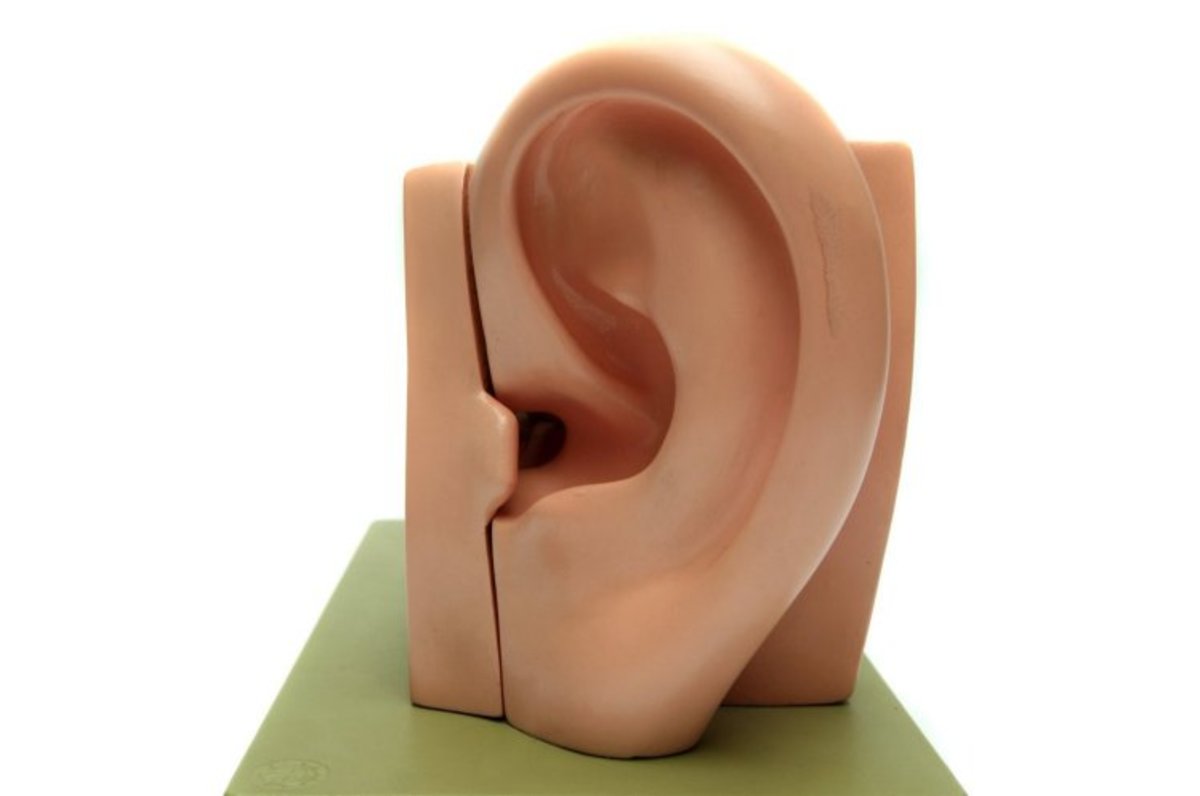How to Make Friends – Ten Proven Tips
The Secret for Making Friends
Do you know the secret for making friends easily? It is very simple.
Do I hear you saying, “Pay them!”
That might work – until you run out of money. The secret is . . . (drum roll, please) . . .
Make other people feel important. That’s it. Make other people feel important.
Are you thinking, “Why do I need to make other people feel important? If they don’t feel important, it’s their problem.”
Or maybe, “How will I benefit from making people feel important? What’s in it for me?
I’m glad you asked. Let’s look at what feeling important represents. May I ask you a question? You know I’m going to ask it anyway. What would you say is one of your strongest needs? Something significant that you must have.
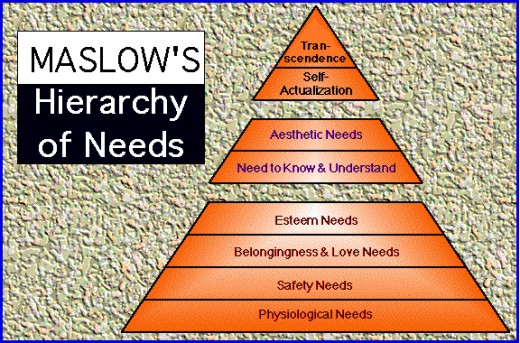
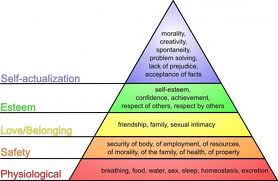
Books on Making Friends
Oxygen? Yes, that's a given. Food and drink? Of course. Hunger and thirst must be satisfied. Other basic needs you may be thinking of are elimination (of all that food and drink). And a roof without leaks over your head.
I am not making this all up. Abraham Maslow, a famous psychologist of the 50s, postulated a Hierarchy of Needs and I have just repeated those that are basic - what Maslow labeled as physiological needs.
Wait a minute. Do I hear you saying, "sex"? Yes, that is a basic need, too. But when all these basic needs are satisfied, what do you want the most? What do you need the most?
Hint: It is something you may seldom get enough of.
No, not money. I'm talking about feeling important! Maslow called that "esteem needs." He said the motivation to feel important - to be recognized and respected - can be as significant to us as our basic needs.
So, memorize this Great Truth:
The more important you can make other people feel, the more positively they will respond to you. And the more easily you will make friends.
Whether friends, spouses, co-workers, bosses, or employees – we all want to be treated as someone special. As a somebody. We like people who make us feel important.
What are the most effective ways to make people feel important? Here are ten proven and effective tips:


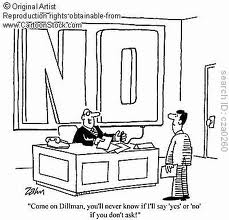
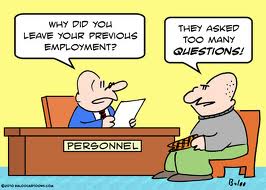
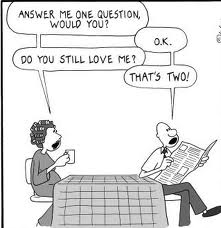
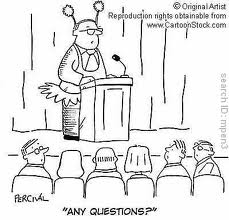
How to Make People Feel Important
1 –Start with a smile.
A smile is mandatory. The shortest distance between two people is a smile. A smile indicates: “I mean you no harm.” Do not smile constantly but occasionally while you are listening. I’m talking about a genuine smile – not the phony smile of a political candidate running for office.
Wear a smile and have friends; wear a scowl and have wrinkles. ~George Eliot
Keep smiling - it makes people wonder what you've been up to. ~Author Unknown
A smile is a powerful weapon; you can even break ice with it. ~Author Unknown
2 – Ask questions.
Asking questions is a type of subliminal flattery because it indicates you are interested in what the other person is saying and are actually listening. Even when you are not.
Ask open-ended questions to invite conversation. Open-ended questions are those that cannot be answered only with a yes, a no or a number.
Example: “Do you come here often?” Answer: ‘No!” That was a closed-ended question. End of conversation.
Instead, ask an open-ended question:“So, tell me more about what your adorable pet pitbull did? Before Animal Control shot him?”
“How did you manage to swim all the way across the Potomac, George?”
The greatest compliment that was ever paid me was when someone asked me what I thought, and attended to my answer. ~ Henry David Thoreau
The important thing is not to stop questioning. ~Albert Einstein
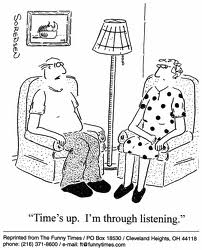
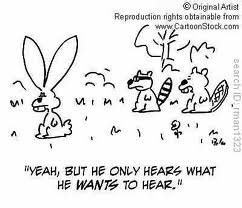

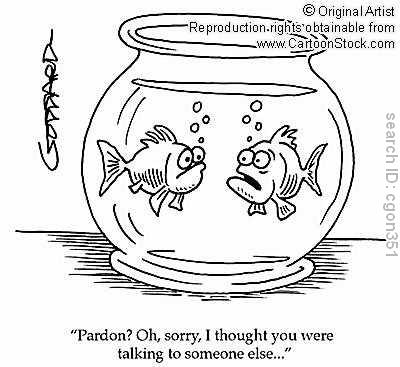
3 – Listen!
Sounds simple, doesn't it. But think about it. How often during a conversation are you really listening to the other person? You may be hearing the words but are you really listening to the meaning?
Or like the rest of us, are you thinking about what you will say in response – or about that project you need to finish – or what you will choose to eat at lunch? That is, whether you will have salad ... or pizza ... or salad and pizza.
4 – Use eye contact to show you are listening.
Look directly at the eyes of the person talking to you. But look away for a second or two from time to time so you are not continuously staring. If you have any difficulty looking other people in the eye, look instead at the bridge of their nose. They will not know the difference. Trust me.
The opposite of talking is not listening. The opposite of talking is waiting. ~Fran Lebowitz
You cannot truly listen to anyone and do anything else at the same time. ~M. Scott Peck
No man (or woman) would listen to you talk if he didn't know it was his turn next. ~E.W. Howe
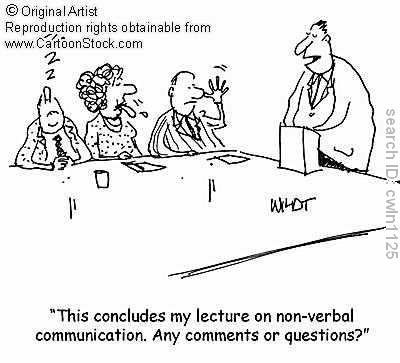
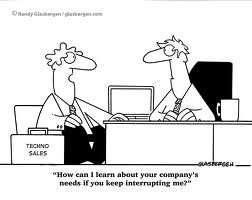
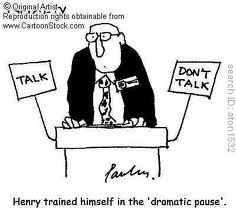
5 – Lean slightly toward the speaker to indicate you are listening.
Slightly! This subtle bit of non-verbal communication (body language) indicates you are listening.
6 – Do not interrupt.
This may be the most difficult of all. Review number 3 above.
A good listener is not only popular everywhere, but after a while he gets to know something. ~Wilson Mizner
Well-timed silence hath more eloquence than speech. ~Martin Farquhar Tupper
7 – Pause before you respond.
When you pause, it indicates you are listening and that the conversation – and the person – are important to you.
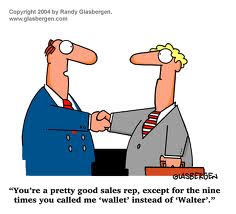
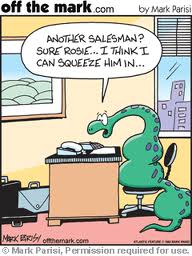
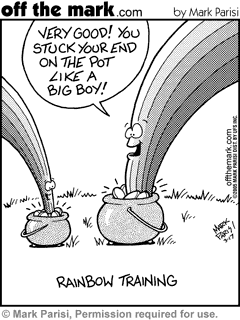
8 – Use the person’s name a few times.
"I could not agree with you more, Mr. Wonderful."
“What an interesting idea, Angelina. Brad, did you hear what Angie just said?”
Talk to people about themselves and they will listen for hours. ~Benjamin Disraeli
9 – Use ‘you’ and ‘your’ more often than ‘I, me mine.’
Next time you go to a automobile dealer to check out prices of the new models, count (silently, please) how many “you/your” pronouns he or she uses in the first few minutes of the sales approach.
That tactic is used consistently by successful salespeople to make the buyer feel more important. You will hear very few “I, me or mine.”
10 – Give positive reinforcement when applicable.
What is the best method? Tell the other person WHAT you like and WHY you like it. Keep it impersonal though.
"You had the audience in the palm of your hand, boss. Especially when you started waving those pink slips around."
Now go forth and make people feel important. Use these ten tips and In no time at all, you will have more friends than you can shake a stick at. But don’t. Shaking hands is good. Shaking a stick – NOT!
© Copyright BJ Rakow, Ph.D. 2011. All rights reserved. Author, "Much of What You Know about Job Search Just Ain't So"
More on Self Development
- Abilene Paradox - Why Do We Say Yes When We Mean No
Why do we often say Yes when we really want to say No? It is a paradox that Jerry Harvey explored in his book, - Assertive Training Course
Assertive Behavior - Part One Are you a passive person because you find it difficult to say No? Or an aggressive person because your credo is my way or the highway? Or an assertive person... - Assertive Behavior How to Say No
ASSERTIVE BEHAVIOR Part Two How to Say No! Do you feel guilty when you say No? Do you say Yes when you really mean No? Here is the best language to use to say no without feeling guilt. - Math Equation for Success in Life
This information should be required reading for all high school students before they graduate. Why? Because adhering to the following mathematical equation will help you achieve your goals in business and ... - Anger Management Simple Test
Are You Angry? Aggressive? Are You Cynical? Take this very simple test and learn how angry, aggressive or cynical you really are. No matter what anyone says. Do you find yourself becoming angry at the simplest little thing?



